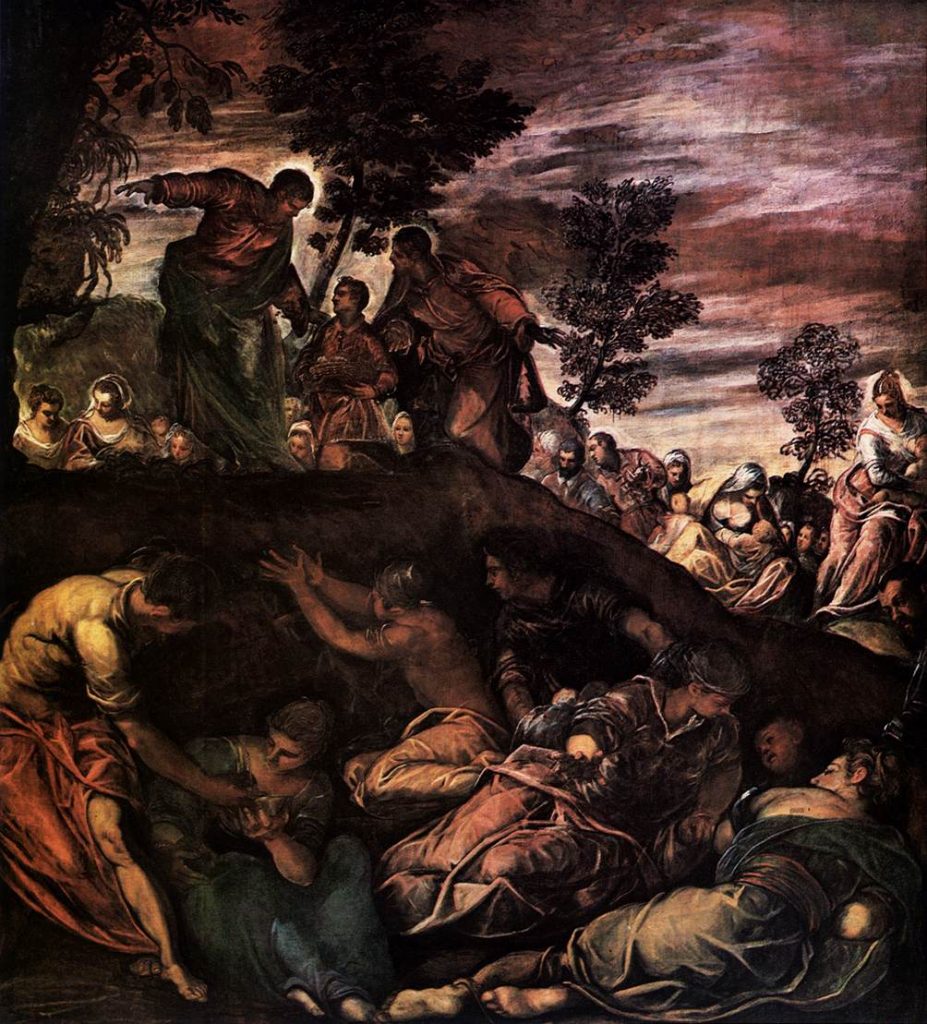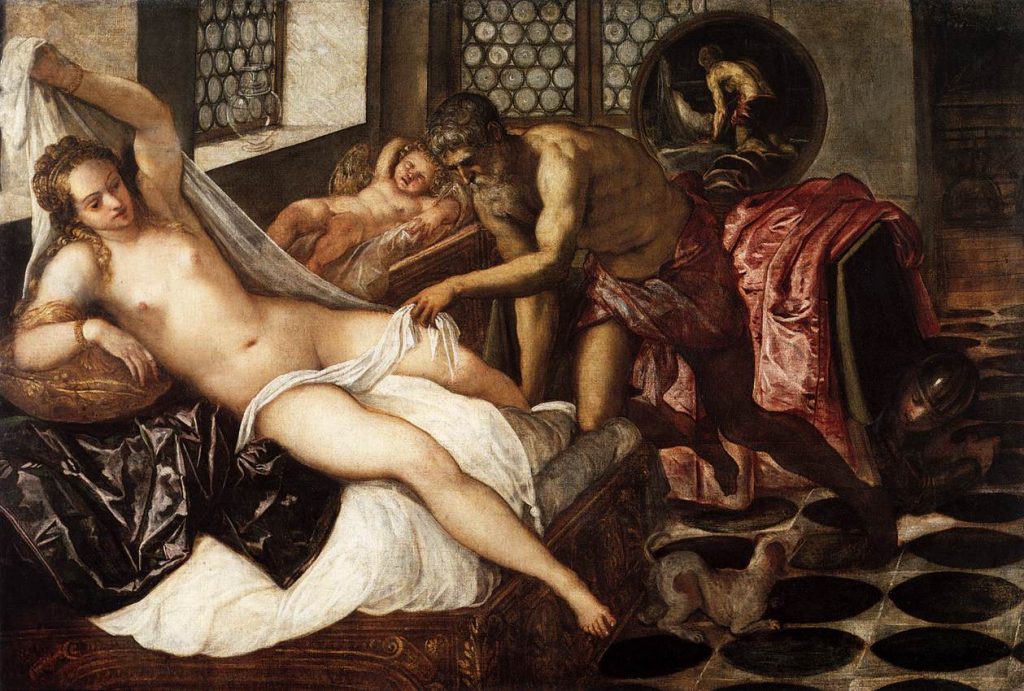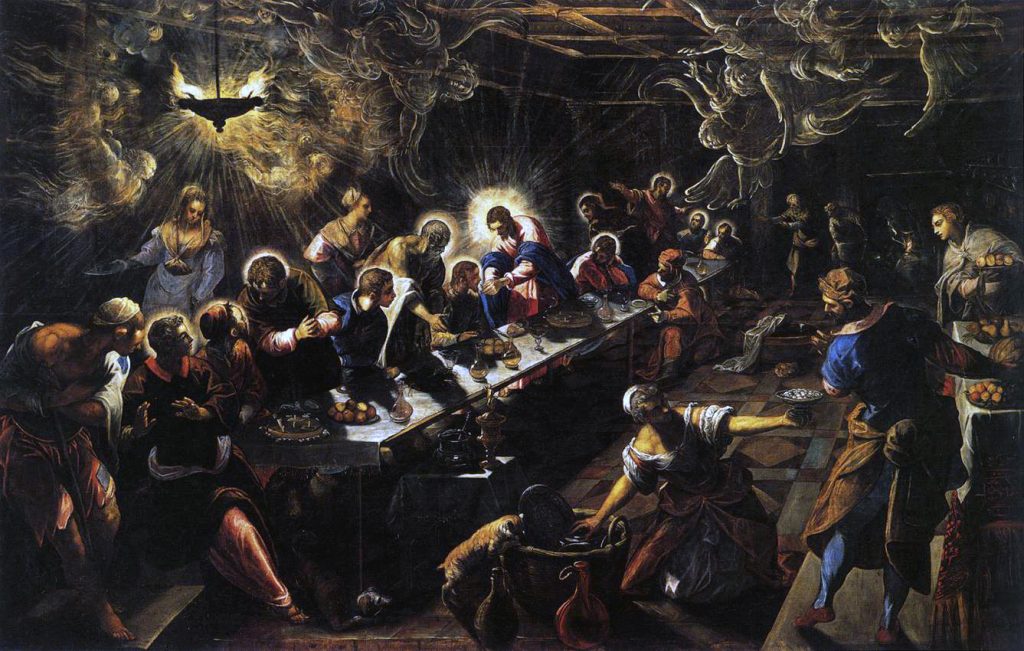Jacopo Robusti but commonly known as Tintoretto was an Italian painter who was one of the peak artists of the High Renaissance. His concentrations in paintings were on the drama of light and how its revolved around space. It was said that he was an apprentice to Titian that was broken off because of the master’s resentment of the pupil’s proud nature and exceptional accomplishment. But others challenged that he features in his work that resembles with those of Michelangelo’s.
Susanna and the Elders. The main premise of this painting was to highlight the urge of lust over respect and teach self control to those viewing this work. The two elderly men would threaten Susanna if she refused to sleep with them. The composition itself allowed the viewer to first bring attention to Susanna with the contrast of the background and then lure the eye to the two creepy old men to give the audience a dynamic uncomfortable sense of danger.

The Miracle of the Loaves and Fishes demonstrates a unique form of lighting with a cloudy sky on a diagonal composition. Most of all the figures in this painting are dynamic in the sense that they are curved. This combination of curve and horizontal composition adds an interest to the work itself.

Figures in this artwork are encouraging a boy with the basket to distribute loaves and fishes.
Vulcan Surprising Venus and Mars. The way Tintoretto painted the nude woman was very sexualized and told a story of a love affair. He also creates a unique perspective once again with this painting with the introduction of reflection in the mirror.

The Last Supper highlighted his knowledge of light used is different types of space. He painted this painting several times, for multiple commissions. This painting is good at drawing the viewer’s eye in with the light central to the composition.

Christ and the Adulteress was viewed as very mature showing that the artist had a greater knowledge in his craft. It owned an uncommon view of perspective. To the natural eye the perspective was flawless and seemed effortless.

Leave a Reply